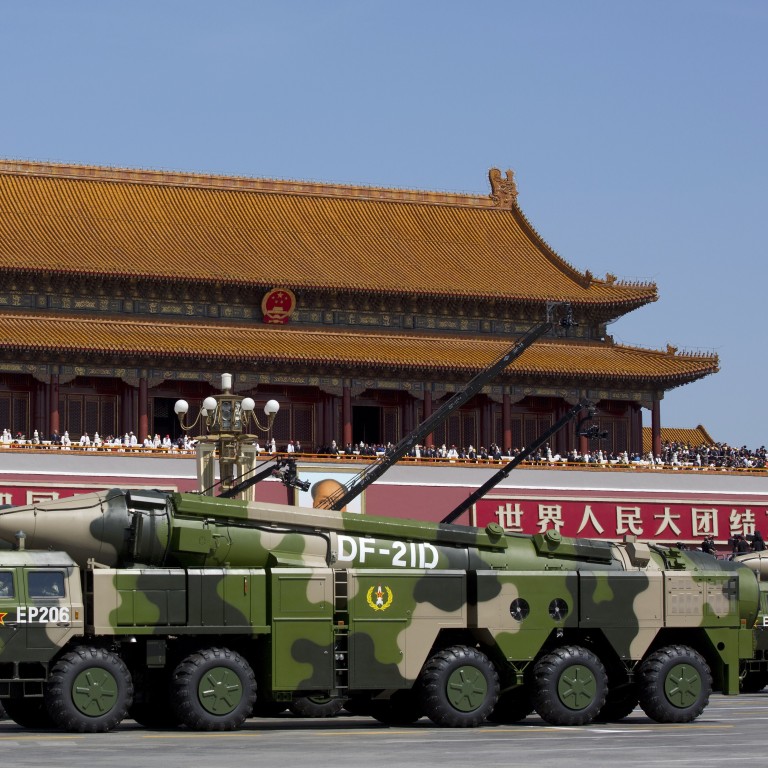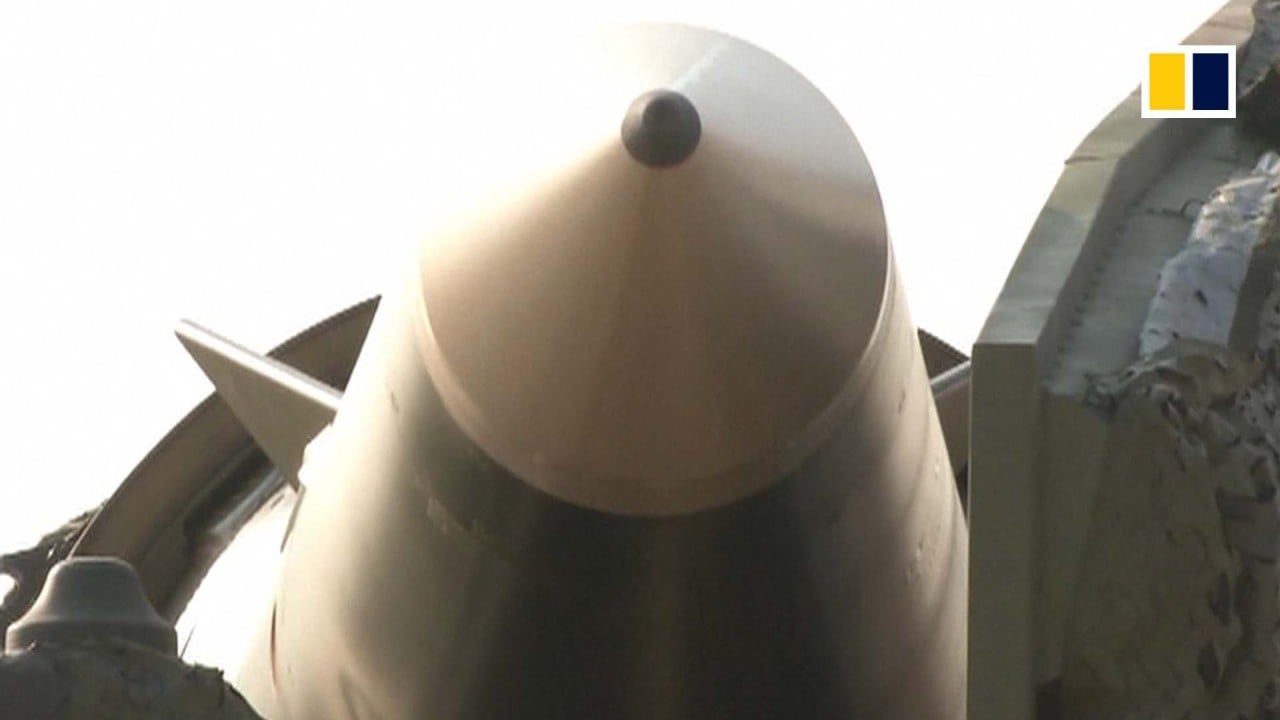
US admiral calls China’s anti-ship ballistic missiles a ‘destabilising effort’ that may not win a war
- Vice Admiral Jeffrey Trussler says United States is closely watching the PLA’s missile programme
- He hopes ‘they just keep pouring money into that type of thing’ because it may not help win a conflict
Vice Admiral Jeffrey Trussler, deputy chief of naval operations for information warfare, said the US was closely monitoring China’s missile programme, calling it an effort to destabilise the region.
“I’m not going to get [into] much more detail of what we know and don’t know about it,” he said at a virtual event hosted by the Intelligence and National Security Alliance on Wednesday, according to military website USNI News.

04:12
Are Xi Jinping’s China and Donald Trump’s US destined for armed conflict?
The US military confirmed the two launches had taken place. China did not officially confirm them, but Wang Xiangsui, a former senior PLA colonel who is now a professor at Beihang University in Beijing, said one of the missiles had hit a moving ship target near the Paracels.
“[China’s missile programme is] something we’re going to watch very closely. It’s something that confuses the international order and concerns the allies in the region. It’s one reason we work to keep the global commons open and the free flow of traffic,” Trussler was quoted as saying.
But he added: “So we watch them very closely. I hope they just keep pouring money into that type of thing – that may not be how we win the next war.”
He said the US Navy was also monitoring the development of the DF-26, which has a reported range of 4,000km (2,485 miles).

00:52
China’s DF-26 ballistic missile drill sends ‘clear message’ to the U.S.
The DF-26 dual-capable missile is a type of weapon banned by the Intermediate-Range Nuclear Forces Treaty signed by the US and Soviet Union towards the end of the Cold War. When the US withdrew from the treaty in 2019, it cited China’s deployment of such weapons as justification.
The DF-21 has a range of about 1,800km (1,120 miles) and state media has described the most advanced weapon in the series, the DF-21D, as the world’s first anti-ship ballistic missile.
US-China tension: preventing war ‘relies on conversations between their militaries’
Military analysts said Trussler’s remarks indicated that the US was developing capabilities to counter China’s anti-ship ballistic missiles.
“What Trussler is saying is that the US has sufficient power to handle the anti-ship missile threat from China,” said Hong Kong-based military affairs commentator and former PLA instructor Song Zhongping. “The US is emphasising that threat and it will further boost its defences against Chinese missiles,” he said, adding that the US military might seek more funds to do this.

01:43
US shoots down mock intercontinental ballistic missile with ship-based interceptor off Hawaii
Collin Koh, a research fellow with the S. Rajaratnam School of International Studies at Nanyang Technological University in Singapore, said the US was investing more in developing hypersonic weapons and ship-based laser systems that could be used to counter the threat from China.
“At present, the US military possesses a comprehensively developed missile defence network, which features a heavy element of ship-based systems,” Koh said, giving the examples of the new Aegis Baseline models, and the SM-3 and SM-6 interceptor missiles that are backed by early-warning satellites to detect incoming ballistic missiles.
“The US has conducted numerous ballistic missile defence tests to that effect, especially off Hawaii, and missile defence exercises with allies such as Japan and Korea,” he said.


